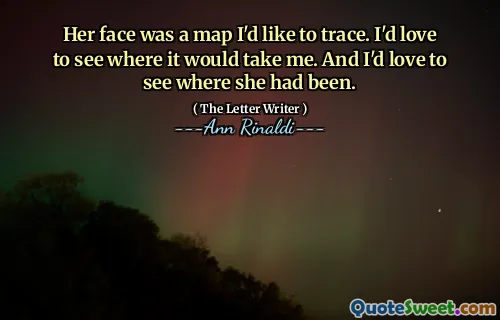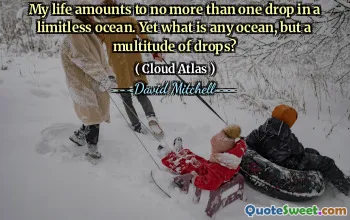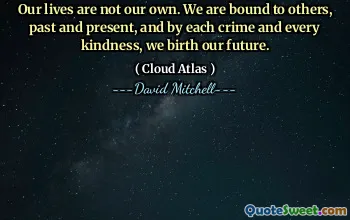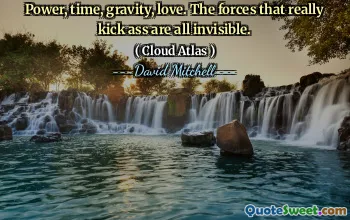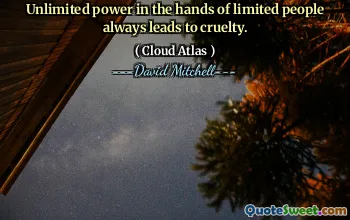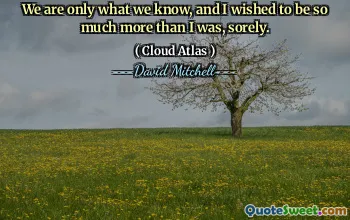
Her face was a map I'd like to trace. I'd love to see where it would take me. And I'd love to see where she had been.
This quote evokes a deep sense of curiosity and admiration, as if the speaker perceives so much depth and history in her face that it beckons exploration. The metaphor of her face being a map suggests that every feature, line, or expression holds a story—an unwritten narrative that invites the observer to decipher its secrets. The desire to trace her face reflects an intimate longing to understand her, not just superficially but on a profound level, appreciating the journey she has traveled in life. It's a poetic way of expressing appreciation for her individuality, her experiences, and the essence that makes her uniquely herself.
From a psychological perspective, faces are powerful symbols of identity and emotion. When someone wishes to explore another's face as if it were a map, it signifies an intention to connect on a deeper emotional plane, to understand that person's history, feelings, and perhaps even their vulnerabilities. The dual desire—to see where it might take the observer and to see where she has been—underscores a longing for reciprocal understanding and discovery. It reflects a romanticized view of connection, where curiosity is paired with reverence.
This quote also speaks to the timeless allure of storytelling through physical features—how marks, expressions, and features narrate our life experiences. It reminds us that people carry stories etched into their faces; by observing closely, we can glimpse the landscapes of their lives. In literature and in life, recognizing these stories fosters empathy, appreciation, and a sense of shared human experience.
Overall, this imagery encapsulates a beautifully poetic tribute to the complexity and beauty of human identity, reminding us that beneath the surface, everyone’s face is a map of their unique journey.
